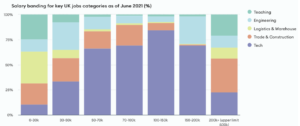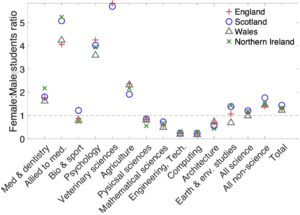Science and spirituality are often not compatible, because spirituality usually entails believing in God or a supernatural being that often does not reside in the materially oriented scientific way of thinking.

Image (From Canva @prerna-madans-team)
Religions were primarily developed to guide people in their everyday matters, and to pass down values of harmony and not division, such as compassion, acceptance, humility, kindness, forgiveness, and refraining from injury or revenge against others. Over time, the application of these virtues in the smallest matters of life has diminished. However, if we return to practising psychological virtues now, I believe great progress can be made, including in science. I will illustrate this using an example from my work.
Since 2018, together with my colleagues at UCL, Oxford University and the University of Edinburgh, I have been working on a meta-analysis (which in the words of Richard Dawkins – is “an analysis of analysis”) determining the association between oral hormonal contraceptives (OCs) and depression in healthy women. Following the strict criteria, we included 14 studies with a total of 2.5 million pill users. The results of the analysis showed that in users of contraceptive pills, the incidence of being diagnosed with clinical depression increased by 27%, and the incidence of being prescribed antidepressants increased by 25% compared to non-users. Depression is one of the most commonly reported side effects of any hormonal contraceptives (see the Lowdown), including pills, patches, intra-uterine devices, such as coils, injections, implants, and rings.
Now let’s look at what we found over so many years of delving deeper into the topic:
Very early in our research, we collated a list of prescribed contraceptive pills, and their patient information leaflets. We noted that depression or anxiety are reported in ‘1 in 10’ or ‘Very Common’ categories for almost all types of contraceptive pills. However, we also noted that the 2011 Cochrane Review on this topic has not mentioned depression a single time. The omission of this important data remains unclear and questionable, especially from a body such as Cochrane.
We also noticed how language around the reported side effects in more recent pills has been changed. When reviewing the patient information leaflet for the latest contraceptive pills (e.g., Opill), the terms depression or anxiety are not listed, but are replaced with the term “nervousness”. There are several plausible explanations for this. One is that the trials were conducted on women who already had these as pre-existing conditions (depression, anxiety), in which case, these don’t need to be categorised as a new side-effect. A second possible explanation is that all mental health effects were combined into a single descriptor “nervousness”, which is reductive of the border and more serious mental health side effects of contraception.
A lot could be said for the widespread push-back and lack of acknowledgment of women’s experiences regarding their health, even by the choice of scientific methods. Perhaps one of the most important discoveries while performing our meta-analysis was how little a layperson would know about the methods used in the studies. Almost all studies that showed no effect between OCs and depression used unclear methodological choices. For example, three (21%) of studies treated women as “non-users” if they have been on birth control for less than one month, three months, or six months. This is ambiguous because women become users of contraception the very day they first take the pill or a hormonal contraceptive. This is almost unimaginable in any other type of drug testing. Furthermore, these women were grouped into “non-users”, which could vastly underestimate the incidence of depression in OC users.
In yet another large study, the methodological decisions became unclear when the authors excluded the category of women who had symptoms of depression combined with symptoms of anxiety. The reasoning seemed to be that women should show only one or the other form of the disorder, again something that is not entirely clear and runs counter to modern diagnostics, which treats the respective diagnoses as two sides of the same psychological coin. In adolescents who have the strongest association between depression and hormonal contraceptives (and as data suggests, persisting and irreversible), it is a common occurrence to experience depression coupled with anxiety. But again, why are such choices made in research that should be sensitive and not omissive of the very experience they are striving to study?
Our meta-analysis was not the first, but the second in the world on this topic. A group of researchers had already performed a meta-analysis in 2021 using a type of statistical method that, for reasons too complex to list here, is completely inappropriate for the data studied. For example, the authors in this meta-analysis made statistical conclusions, unsupported by the data – the authors claimed: “We provide quantitative evidence on experimental data that hormonal contraceptive use is relatively safe regarding the effect on depressive symptoms”, but the authors provided no evidence on the safety of hormonal contraceptives because they did not analyse any safety data! This sort of ambiguity should have been picked up by the reviewers at the least.
If we consistently apply the principles that are not favourable to human experience and wellbeing, and even negate them, we only drive ourselves deeper into confusion and to put it bluntly – “hell”. It has been over 60 years since the pill was first created, and the evidence for hormonal contraception causing a great deal of mental and physical suffering to many of its users is incontrovertible and overwhelming. In the words of Viktor Frankl, “The ultimate freedom given to human beings, at any moment in life, is one’s attitude in any given circumstances. Life is not primarily a quest for pleasure, as Freud believed, or a quest for power, as Alfred Adler taught, but a quest for meaning.” What, then, is the meaning of pretending we cannot see the extent of true suffering for contraceptive users? If we didn’t pretend up until now, we could have been at a different reality of contraceptive science. And this is how I see that “spirituality and science as one”.
Our meta-analysis is due for submission in The Lancet Obstetrics, Gynaecology, & Women’s Health in May 2025.


